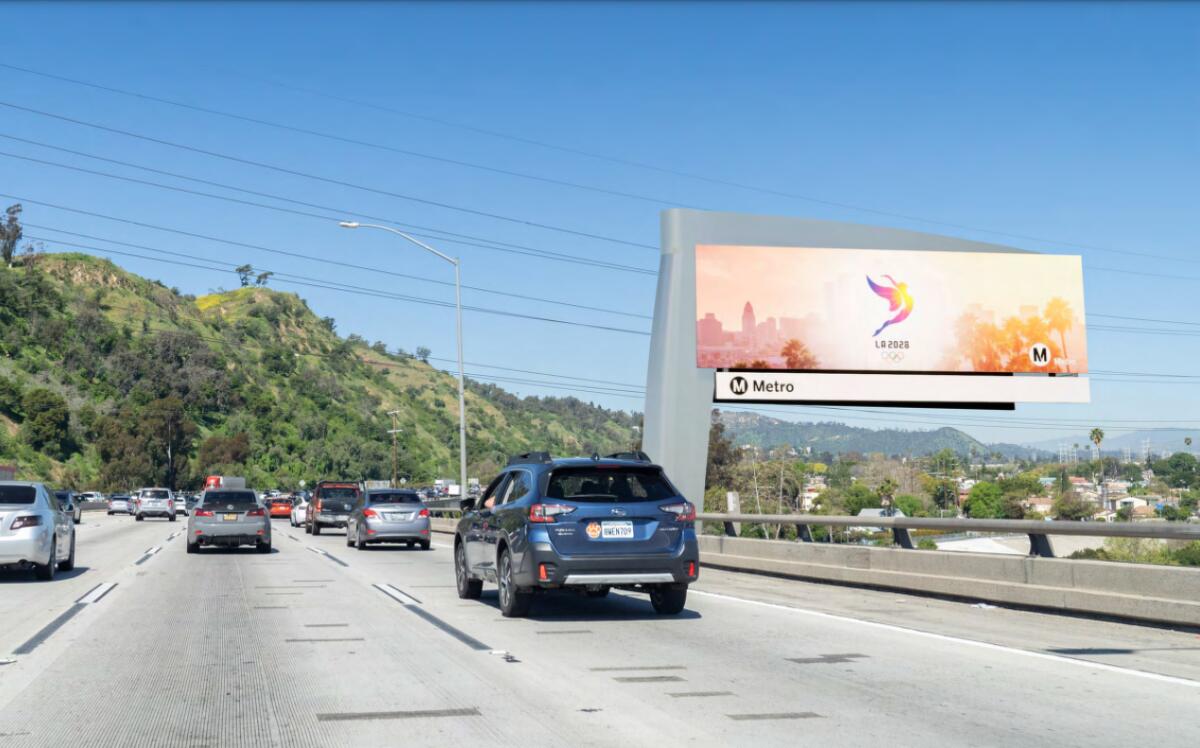Letters to the Editor: Get ready for more light pollution in L.A. under Metroâs digital billboards plan

To the editor: In typical fashion the discussion over electronic billboards has the proponents extolling the utopian virtues of the concept. There are plenty of downsides to consider. In addition to the amount of light produced, one of the main issues is the constant changing of the signage every eight seconds. It is a reasonable concern and certainly a distraction for drivers. The solution is so simple. Limit information changes on these billboards to every half hour or some other extended timeframe.
Robert Bachmann, Los Angeles
..
To the editor: We should always be leery when city officials suggest a proposal will be âactually removing distractions from the roadsâ as in the case of 80 digital billboards proposed for L.A. freeways and roadways. Especially when the group advocating for this idea is not elected but rather, appointed by the mayor. Whereas the side opposing this âfinancial windfallâ suggests this proposal would be tantamount to increasing visual blight â and adding to light pollution, a problem currently plaguing Los Angeles.
I surmise that turning these billboards off at midnight will have the desired effect of less pollution, right? But let me remind folks about the disoriented greater white-fronted goose that landed during a game in Dodger stadium, with bright stadium lights. More dire effects will be created once more of these billboards are erected.
Take a drive down Wilshire Avenue. Very close to the Wiltern theater is a huge distracting billboard and Iâve witnessed near accidents occur practically every time Iâm in the area. Iâd be curious to know how many accidents occur given the level of distraction from this one billboard plastered on the side of a tall building. So why the city wants to place these on freeways, where speeding vehicles and distracted drivers are part of the everyday experience, boggles the mind?
Imagine for a moment â if trees generated the amount of money these billboards will bring into the coffers, how incredibly beautiful this city would look as billboard companies would race to place more and more! Instead, officials are lauding a new revenue stream called digital billboards.
Kathryn Louyse, Glendale
..
To the editor: The mayor and the planning commission demonstrate the same blind, gullibility that plagues Metro. The billboard companies know that dangling the ârevenueâ bait will get them in the door. Metroâs claim of traffic or public safety alerts is meaningless. The only winners, as usual, will be the billboard companies that look to reap profits and will have a further toehold on proliferating more digital signs elsewhere.
Rex Altman, Los Angeles
..
To the editor: Metroâs proposal to install 80 digital signs is a really bad idea. Distracted driving is a huge issue: Taking your eyes off the road for just two seconds doubles the risk of a crash.
Have any of the planâs proponents driven in Los Angeles lately, or are they aware of the increasing levels of dangerous driving? Digital signs are a visual, light-polluting blight. More important is their sole purpose to draw driversâ attention away from the road and to their advertising images â relegating traffic and amber alerts to the shadows.
Near city landmarks, bustling intersections, on busy freeway, and adjacent to residential streets, these huge signs are brightly lit, with changing flashing images that operate until midnight. Further, they disorient nocturnal wildlife and contribute to the annual death of millions of birds. This program is about making money as it puts drivers and pedestrians at risk. Metro and the powers that be must find ways to bolster the coffers without putting L.A. residents in harmâs way or marring its iffy visual landscape.
Mary Proteau, Los Angeles






